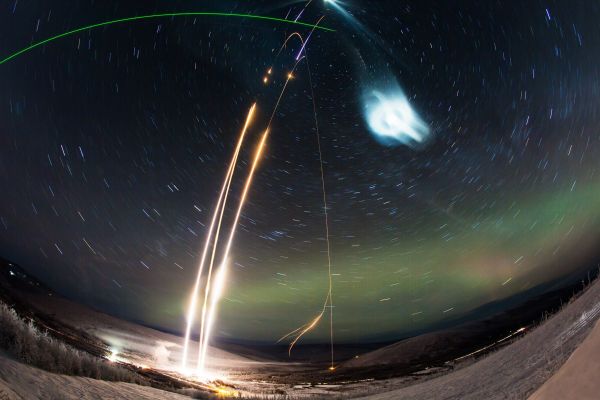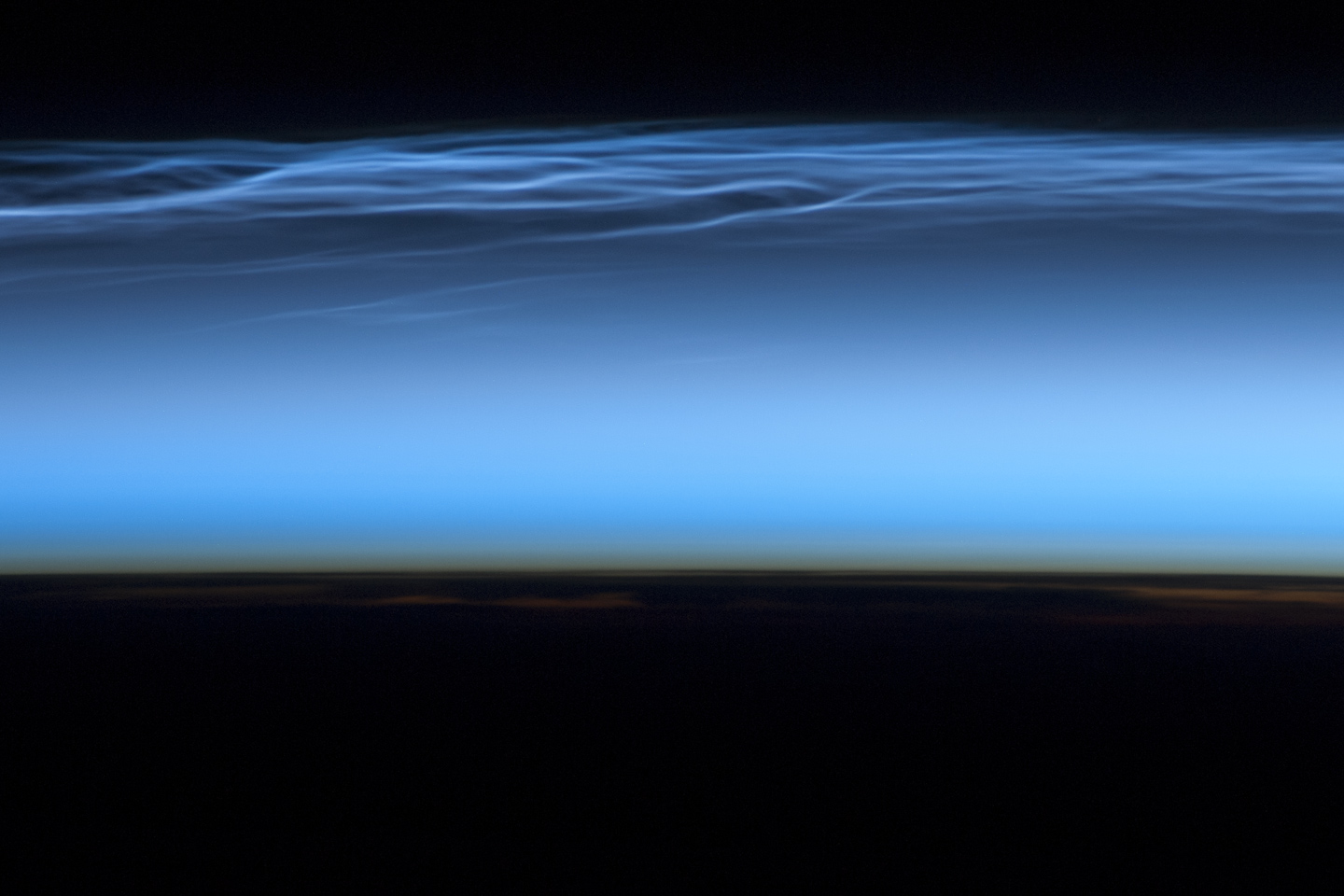Space launch traffic may influence mysterious night-shining clouds in Earth's atmosphere

A NASA-funded study is giving scientists insight into how "night-shining clouds" form in the upper atmosphere — and the role that growing space traffic plays in the phenomenon.
Scientists have known about these high-flying clouds since at least the late 1800s — well before the space age that launched in 1957. Newer research, however, shows that these clouds tend to form in high-altitude areas with abundant water vapor, such as what is produced after modern-day rocket launches.
The polar mesospheric clouds (PMCs), as the clouds are formally called, are collections of ice crystals usually found over the north or south poles during the late spring and summer. They're easiest to spot at twilight when the sun shines on them from just below Earth's horizon.
Photos: Magnificent night views of the heavens in America's dark sky parks
"What has attracted a lot of interest in these clouds is their sensitivity — they're occurring just on the edge of viability in the upper atmosphere, where it's incredibly dry and incredibly cold," lead author Richard Collins, a space physicist at the University of Alaska, Fairbanks, said in a statement. "They're a very sensitive indicator of changes in the upper atmosphere — changes in temperature and/or changes in water vapor."
Collins and his team followed the origin story of PMCs using NASA's Super Soaker mission, which used a small suborbital rocket that flew to space from Alaska. Water vapor from such launches, the study suggests, can lower the temperature in the immediate region and create a shiny cloud. Team members found this even happens in January during the toughest conditions in the Arctic — when PMCs don't typically form.
"We wanted to make sure to avoid mixing artificially created and naturally occurring PMCs. That way, we could be confident that any PMC we observed was attributable to the Super Soaker experiment," Irfan Azeem, a space physicist at Astra in Colorado and principal investigator of the Super Soaker mission, said in the same statement.
Sign up for the Live Science daily newsletter now
Get the world’s most fascinating discoveries delivered straight to your inbox.
After the rocket launched on Jan. 26, 2018, from the Poker Flat research range near Fairbanks, it flew to 53 miles (85 kilometers) in altitude and deliberately released 485 lbs. (219 kilograms) of water packed into a canister. Just 18 seconds later, ground-based laser radar picked up the signature of a PMC.

The team also put their results into a model to estimate how PMCs formed. The model suggested that the water from Super Soaker must have cooled the air dramatically, by about 45 degrees Fahrenheit (25 degrees Celsius). "We don't have direct temperature measurements of the cloud, but we can infer that temperature change based on what we think is required for the cloud to form," Collins said.
While this experiment threw water vapor into the air with a canister, water vapor is a common byproduct of satellites and rocket launches — such as with the space shuttle that flew from NASA's Kennedy Space Center between 1981 and 2011. One launch of the space shuttle spurred 20% of PMC ice mass observed in a season, the team members said in their statement.
"As the water vapor freezes, it turns into ice crystals. But those ice crystals absorb heat even better than water in vapor form. As the ice crystals heat up, they eventually sublimate back into vapor, and the cycle repeats," NASA added in the statement.
The effects of space traffic should be monitored and if rocket launches increase dramatically, the researchers urge that PMCs should be further modeled to understand what happens in an artificial environment. (More space traffic is a reality already, and may accelerate with the launch of more cubesats and small satellites in the coming years.)
A paper based on the team's work was published Feb. 1 in the Journal of Geophysical Research: Space Physics.
Follow Elizabeth Howell on Twitter @howellspace. Follow us on Twitter @Spacedotcom and on Facebook.

Elizabeth Howell was staff reporter at Space.com between 2022 and 2024 and a regular contributor to Live Science and Space.com between 2012 and 2022. Elizabeth's reporting includes multiple exclusives with the White House, speaking several times with the International Space Station, witnessing five human spaceflight launches on two continents, flying parabolic, working inside a spacesuit, and participating in a simulated Mars mission. Her latest book, "Why Am I Taller?" (ECW Press, 2022) is co-written with astronaut Dave Williams.











